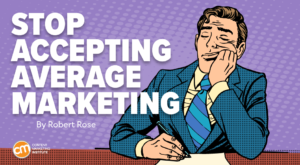
“Instagram, with its huge, highly-engaged audiences who consume millions of pictures and videos daily, is a gold nugget for brands and marketers.” That’s one takeaway from a detailed survey of influencer marketing released by influencer platform HypeAuditor. The report does not, however, underestimate the growing importance of TikTok which hit one billion active users last year and is experimenting with social commerce.
HypeAuditor also estimates that the global influencer marketing market will grow from $13.8 billion in 2021 to $22.2 billion by 2025. The research was based primarily on data from 1.6 million Instagram influencer accounts, over 108.7 thousand YouTube channels, and 86 thousand TikTok accounts.
Instagram versus TikTok. TikTok saw an explosion in numbers of users in 2020 (almost 90%). That slowed in 2021, but it still grew faster than Instagram (18.3% versus 6.2%). Around two thirds of TikTok users are under 24. Instagram saw a small increase in the percentage of users aged 25-34 last year, perhaps reflecting a defection of younger users to TikTok.
Instagram remains, for now, the most important channel for influencer marketing, with 68% of marketing specialists relying on it. Instagram has launched a professional dashboard for creators, extended Reel length to 60 seconds and made link stickers available to all accounts. The majority of influencers (around 40%) have niche audiences of 5,000 or less. The mega-influencers with audiences in seven figures make up less than one percent of all influencers. Small-scale influencers were shown to have the highest engagement with audiences.
TikTok has introduced new live streaming features, an educational creator portal, and a Q&A option to promote engagement between creators and audiences. Small-scale influencers on TikTok surpass 50% of all influencers, but mega-influencers have the highest engagement rate.
Why we care. The growth of interest in short-form video and engagement with social channels that host it (and let’s not forget YouTube with its Shorts offering) was dynamic in 2020 and it’s no surprise that it has slowed somewhat since then. But it’s here to stay and there’s value in it for everyone, from creators with relatively small but highly engaged audiences to brands that know how to deliver the right kinds of experiences.
Put that together with the soaring importance of social commerce, and the appetite among audiences for authentic content rather than just ads, and it’s easy to see influencer marketing as a mainstream marketing channel and not just an interesting add-on.




